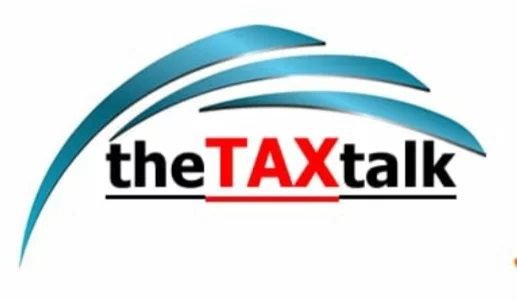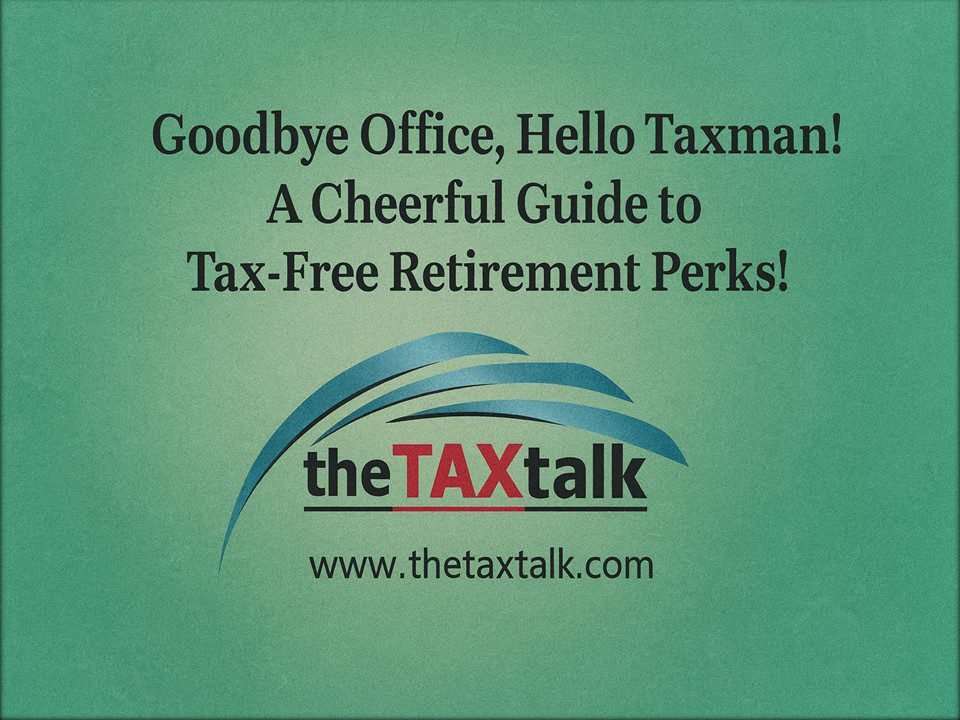![]()
Goodbye Office, Hello Taxman! A Cheerful Guide to Tax-Free Retirement Perks!
There comes a day in every salaried person’s life when the alarm clock becomes unemployed, the tie gets early retirement, and the word “target” finally means a golf score, not a boss’s demand. Yes, it’s called retirement – that golden phase where you finally get paid for not working!
But the Income Tax Department, as always, believes in attending every celebration with a calculator in hand. So before you plan your Goa trip or buy that dream recliner, let’s decode how much of your retirement benefits actually remain yours – and how much goes to your ever-loving partner, the Income Tax Act, 1961.
1. Gratuity – The “Thank You” Gift That May Be Tax-Free
Let’s start with gratuity, that sweet lump-sum “thank you” from your employer for long and loyal service. It’s governed by Section 10(10) of the Income Tax Act.
Now, depending on who you worked for, the rules differ.
If you’re a Government Employee
Congratulations – you’re among the lucky few for whom gratuity is 100% tax-free.
Whether you worked for the Central or State Government, or even a local authority, the entire amount is exempt under Section 10(10)(i).
For you, tax planning on gratuity is as simple as your attendance register – always full!
If you’re a Bank or Private-Sector Employee
For everyone else – including bank employees (public or private) – things are a tad more mathematical. The exemption is governed by Section 10(10)(ii) or 10(10)(iii) depending on whether your employer is covered under the Payment of Gratuity Act, 1972.
The exemption is limited to the least of these three:
1. Actual gratuity received
2. 15 days’ salary × completed years of service (where salary means basic + DA)
3. ₹20,00,000 (the government-notified ceiling)
That’s right – ₹20 lakh is the maximum tax-free gratuity. Any amount above that politely walks into the “taxable income” column.
Fun fact: Earlier, this limit was ₹10 lakh. Then someone in the Finance Ministry must have retired and realized the pain, so it was doubled to ₹20 lakh!
2. Leave Encashment – Because Every Unused Leave Has Value!
All those “casual leaves” you saved for later? Here’s the reward!
When you retire and your employer pays you for unused leaves, it’s called Leave Encashment. The exemption is covered by Section 10(10AA).
Government Employees Again!
You guessed it – fully exempt. If you served the Government, even your unused holidays earn you tax-free income. The logic: you served the nation; you deserve the vacation!
Private or Bank Employees
For non-government employees, there’s a bit of arithmetic – and a brand-new relief.
In 2023, the exemption ceiling was raised from ₹3,00,000 (yes, you read that right – ₹3 lakh since 2002!) to a generous ₹25,00,000 under Notification No. S.O. 2276(E) dated 24-05-2023.
The exemption is the least of the following four:
1. Actual leave encashment received,
2. 10 months’ average salary (basic + DA + fixed commission),
3. Cash equivalent of unavailed leave (max 30 days per completed year of service), or
4. ₹25,00,000.
So yes, that beach vacation can now be tax-free up to ₹25 lakh!
Just remember, this ₹25 lakh is the lifetime ceiling – not per employer.
So if you switched five jobs, the exemption is still ₹25 lakh total, not ₹25 × 5!
3. Provident Fund – Your Long-Term Friendship with Compound Interest
Next up: Provident Fund (PF) – that patient companion silently growing over decades while you complained about deductions.
There are three kinds of PFs:
1. Statutory Provident Fund (SPF) – for Government employees
2. Recognised Provident Fund (RPF) – for private-sector employees with approved PF trusts
3. Unrecognised Provident Fund (URPF) – the black sheep of the PF family
Exemption Rules:
• For SPF – Entire withdrawal is tax-free.
• For RPF – Entire amount (employee’s share + employer’s contribution + interest) is tax-free if you have served 5 years or more.
If you withdraw before 5 years, it becomes taxable like salary + interest income.
• For URPF – Contribution and interest portions are taxed differently at withdrawal.
Tip: If you change jobs, transfer your PF instead of withdrawing — otherwise your 5-year clock resets and taxmen get their cut!
4. Pension – Monthly Comfort, But Taxable!
Ah, pension – your post-retirement salary without the boss!
Sadly, for tax purposes, it’s still treated like salary under Section 17(1).
There are two types:
1. Uncommuted Pension – monthly payment → fully taxable as salary.
2. Commuted Pension – lump-sum payment → partly exempt under Section 10(10A).
Exemption for Commuted Pension:
• Government employees: Fully exempt.
• Non-government employees:
– If gratuity not received → 1/2 of the total commuted value exempt.
– If gratuity received → 1/3 exempt.
Mini joke: “Pension is like your ex-employer saying – I still care, but not too much!”
5. Voluntary Retirement Scheme (VRS) – Early Exit, Smart Tax Relief
Some prefer to bow out early through VRS.
To make it attractive, the Government offers relief under Section 10(10C).
Exemption limit: ₹5,00,000 (once in a lifetime).
But there’s a catch – if you also claim relief under Section 89 (for income spread over years), you can’t have both. It’s like the income tax version of “either pizza or burger – not both!”
6. Superannuation Fund – The Elite Retirement Plan
Some employers maintain a superannuation fund, which sounds fancy because it is.
The tax treatment depends on when you receive it:
• Amount received on retirement, death, or incapacity → fully exempt (Section 10(13)).
• Amount received in other cases → taxable to the extent of employer’s contribution and interest.
It’s like an exclusive club – tax-free only if you leave gracefully!
A Quick Summary Table
| Benefit | Section | Government Employees | Private / Bank Employees | Max Exemption |
| Gratuity | 10(10) | Fully exempt | Least of 3 (Actual, 15 days’ pay, ₹20L) | ₹20,00,000 |
| Leave Encashment | 10(10AA) | Fully exempt | Least of 4 (Actual, 10 months’ avg salary, 30 days leave, ₹25L) | ₹25,00,000 |
| PF Withdrawal | 10(11), 10(12) | Fully exempt | Exempt if ≥5 years | N/A |
| Pension | 10(10A), 17(1) | Fully exempt (commuted) | 1/3 or 1/2 exempt | Varies |
| VRS Compensation | 10(10C) | ₹5L (once) | ₹5L (once) | ₹5,00,000 |
| Superannuation | 10(13) | Exempt on retirement/death | Same | N/A |
Practical Pointers for Retirees
1. Check Form 16 / 26AS carefully – sometimes banks deduct TDS on full pension or gratuity even when partially exempt. Claim the correct exemption in your ITR.
2. Remember lifetime limits – ₹20L for gratuity and ₹25L for leave encashment apply across all jobs.
3. Plan timing wisely – if you’re close to the limit, negotiate staggered payments over two years to optimize tax slabs.
4. Invest smartly – post-retirement, shift from tax-saving to tax-efficient investing (like SCSS, SWPs, or tax-free bonds).
5. Don’t forget advance tax – retirement benefits can spike your income temporarily; plan installments if TDS is insufficient.
And Finally… Retirement Is Not the End of Income – Just the Start of Interest!
Retirement isn’t about ending work – it’s about making your money work smarter.
So while your boss says “goodbye,” let’s make sure the taxman doesn’t say hello too loudly.
Because at the end of the day, the goal of retirement is simple:
“More interest


